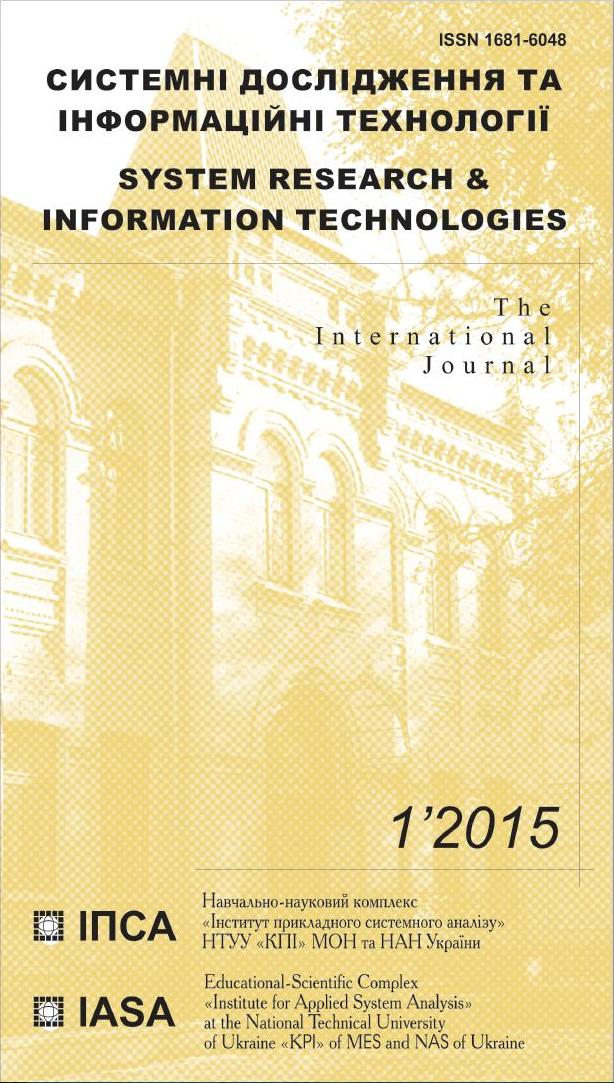Mathematical reliability model for failure cause analysis of a system with separated derating redundancy
Abstract
The mathematical reliability model of a repairable system with a separate derating redundancy for the failure causes analysis of such a system is proposed. The model is formed in three stages. An the first stage, the system reliability is mathematically described by a dynamic fault tree, whose main feature is that its logic blocks define not only the failure condition of a system, but also the conditions for load-sharing between the components. At the second stage, based on the dynamic fault tree, the mathematical model of the state and transition graph of the system is constructed and analyzed. At the third stage, the graph model based on the tensor analysis is transformed to a split homogeneous Markov model. According to the calculation results, the probability characteristics of the minimal cut set are determined and the most likely system failure cause is recognized. It is shown that with increasing the duration of usage, the most likely system failure cause changes. Such a behavior of system reliability indices is due to the impact of load-sharing between components whose lives have Weibull distribution.References
Wei-Chang Yeh. A new algorithm for generating minimal cut sets in k-out-of-n networks // Reliability Engineering & System Safety. — 2006. — 91, № 1. — P. 36–43.
Vega M., Sarmiento H.G. Algorithm to evaluate substation reliability with cut and path sets // Industry Applications, IEEE Transactions on. — 2008. — 44, № 6. — P. 1851–1858.
Stefanydyn D.V., Romanchuk K.H. Lohiko-imovirnisna otsinka ryzyku zbytkiv vid avarijnoho vylyvu vody z basejnu dobovoho rehuljuvannja Zaramahs'koyi HES-1 // Systemni doslidzhennja ta informatsijni tekhnolohiyi. — 2013. — № 3. — S. 130–141.
Yong Liu, Singh C. Reliability evaluation of composite power systems using Markov cut-set method // IEEE Trans. on Power Systems. — 2010. — 25, № 2. — P. 777–785.
Peschanskij A.I. Kalendarnoe tehnicheskoe obsluzhivanie elementov monotonnoj sistemy s uchetom ih minimal'nogo avarijnogo vosstanovlenija // Systemni doslidzhennja ta informatsijni tekhnolohiyi. — 2011. — № 1. — S. 34–49.
Haitao Guo, Xianhui Yang. Automatic creation of Markov models for reliability assessment of safety instrumented systems // Reliability Engineering & System Safety. — 2008. — 3, № 6. — P. 829–837.
Codetta-Raiteri D. Integrating several formalisms in order to increase Fault Trees’ modeling power // Reliability Engineering & System Safety. — 2011. — 96, № 5. — P. 534–544.
Juan Eloy Ruiz-Castro, Rafael Pérez-Ocón, Gemma Fernández-Villodre. Modelling a reliability system governed by discrete phase-type distributions // Reliability Engineering & System Safety. — 2008. — 93, № 11. — P. 1650–1657.
Chryssaphinou O., Limnios N., Malefaki S. Multi-state reliability systems under discrete time semi-markovian hypothesis // IEEE Trans. on Reliability. — 2011. — 60, № 1. — P. 80–87.
Shcherbovs'kykh S.V. Matematychni modeli ta metody dlja vyznachennja kharakterystyk nadijnosti bahatoterminal'nykh system iz urakhuvannjam pererozpodilu navantazhennja: monohrafija — L'viv: L'vivs'ka politekhnika, 2012. — 296 s.
Bobalo Ju.Ja., Volochij B.Ju., Lozyns'kyj O.Ju., Mandzij B.A., Ozirkovs'kyj L.D., Fedasjuk D.V., Shcherbovs'kykh S.V., Jakovyna V.S. Matematychni modeli ta metody dlja analizu nadijnosti radioelektronnykh, elektrotekhnichnykh ta prohramnykh system: monohrafija. — L'viv: L'vivs'ka politekhnika, 2013. — 300 s.

